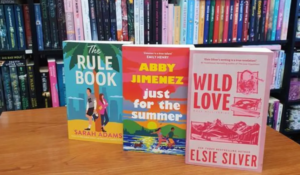Romance Writers of New Zealand (RWNZ) is a nonprofit Incorporated Society, with a membership of more than 250 romance writers and related industry professionals, whose mission is to advance the professional and common business interests of career-focused romance writers through networking and advocacy.
For media enquiries please contact Our Publicity Officer
In The Media

Best-selling New Zealand author Nalini Singh is fine with no-one at home knowing who she is

MrsMoa on TikTok talking about RWNZ

